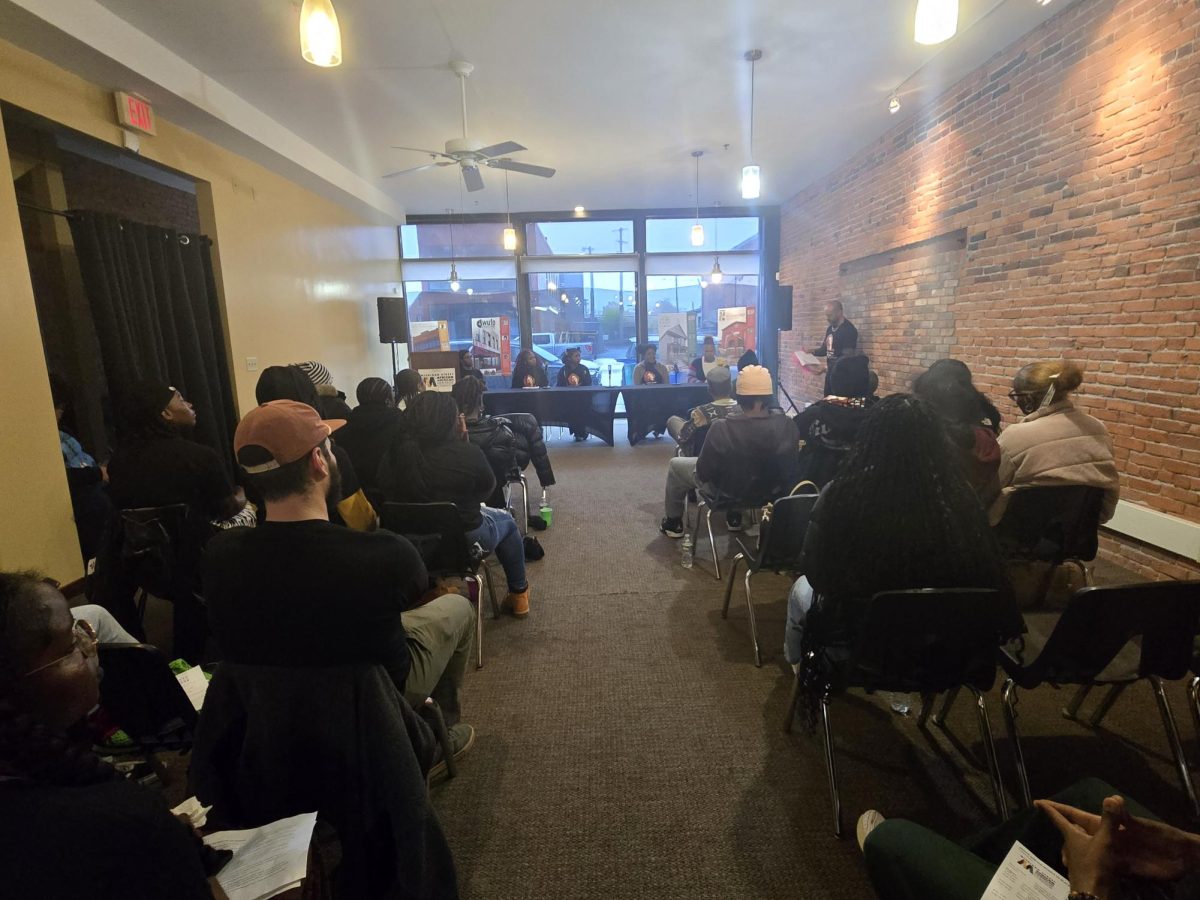In what areas can the NBA improve?
November 1, 2016
This is the second of a four-part series that will run in consecutive weeks. The series will focus on what changes the commissioner should do to improve their respective league.
The NBA season kicked off just a week ago. The hype they are seeing is because of the growing stardom the sport and its teams demand. The NBA has been growing the last five years in large part due to superstar players, who are so powerful that they control the power balance in the league.
The biggest issue the NBA faces is that too many players are entering the draft at 18-19 years old. Often, these young players are not very technically skilled. The issue is that they push out older players too soon. Let’s not forget that the All-Star game has become a bit of a bore. I have solutions to these pressing issues.
On Jan. 1, 2008, Ralph Wilson Stadium hosted the first-ever NHL Winter Classic, an outdoor hockey game between the Buffalo Sabres and the Pittsburgh Penguins. The game was a big hit, and if the NHL had not decided to try to oversell the product by having it about five times a year, it would still be a big hit.
I am proposing the NBA should have an outdoor game of its own. If you’ve ever played NBA 2K video games, you’ve probably played in ‘Blacktop mode’ at least once or twice. In this mode, it goes back to the roots – blacktop basketball courts. So why not have ‘Blacktop mode’ in reality? Yes, have a live NBA game with real NBA players played outdoors on a blacktop court. And not just any game, but the All-Star game.
Playing the All-Star game outdoors would bring the perfect spice to an event that has become hard to watch in recent years. Like how the Winter Classic brought NHL players back to their roots of playing hockey outside, playing on blacktop courts would bring NBA players back to their roots.
Similar to the MLB, I would put home-court advantage in the finals on the line in the All-Star Game. I would also show off the stars and bring players back to their roots even more as I would change the fourth quarter to make it 10 minutes with 2-on-2 play, in a game similar to “21.”
The fourth quarter in the All-Star game would keep most “21” rules, except fouls would be called. And the goal would not be to reach 21 but score as many points as you can, as the score of the game would still be cumulative of all four quarters. By putting this together, the All-Star weekend would not only be far more interesting, but also give the NBA ability to donate money to a local YMCA in a very publicized way.
The biggest issue facing the NBA today is the number of players entering the draft who are just not ready to play in the league.
Fourteen of the 60 picks in the 2016 NBA Draft were players who had just completed their freshman year of college, almost the same number of college seniors were chosen in the same draft. Of those 14 freshmen, five were picked in the top 10, along with a high school senior. Only one college senior – Buddy Hield – was picked in the top 10.
One can only come up with two reasons why this was the case. Either: A) The kids born in 1997 are just far superior basketball players that are already better than the players who are three years older than them, or B) These college freshmen are entering the draft too early and NBA teams are forced to draft players based on what they could do potentially three or four years in the future, not what they can do now for their team.
Let’s look at the draft three years ago, when these college seniors were freshman in 2013. That year, eight college freshmen were selected in the draft, with three going in the top 10. There were also eight sophomores in the draft, meaning that freshman and sophomores accounted for as many draftees as the college seniors that year. Based on those results, we can probably go with choice B.
Think about any high school or collegiate team sport and ask yourself, ‘How successful are teams who have the same number of senior and freshmen starters?’ Probably not very successful, unless the underclassmen are extremely talented. It works the same with draft classes. Although, at the top of a draft or team the players may be really good, the middle and the bottom often determine the overall success.
This has also caused the quality of play in college basketball to drop significantly. Most games see teams scoring 50 or 60 points. The rivalries aren’t as good as they used to be. Let’s face it, top rivalries like Duke-North Carolina would not have a strong national audience to watch the games today without its storied past. The rivalry needed players like James Worthy, Michael Jordan, Christian Laettner and Sam Perkins, who all played at least three years in college, in order for it to become truly great and interesting. The best players are leaving college too early before any real sense of rivalry can even develop.
Players leaving early not only hurts college basketball, but also the NBA. Players come into the league with great athleticism, but lack skill. Due to the lack of skill, the young players end up playing two to three years of mediocre basketball, and NBA coaches are stuck developing them, or the players never develop.
This a waste of two to three years, because they are in the NBA playing either bad or mediocre basketball, instead of playing in college where they would be gaining star-power and developing. Staying in college, the player would most likely be a starter where they will see pivotal minutes on the court. That way when they are drafted into the league, they are ready to play and already have a following.
So how do we fix this? Many have suggested forcing players to play three years in college or paying college athletes. I’m not about forcing things or paying college athletes. The reason most players leave early is that they want to get paid. Playing in college, the players don’t get paid, so they don’t want to play in college too long to risk losing all that money because they might get hurt.
Instead, I have come up with the Under-21 Salary Cap. The Under-21 Salary Cap would place a cap on how much NBA teams could spend on players who will not reach the age of 21 by Oct. 1 of that year. The Under-21 cap would be 10 percent of the whole regular salary cap. If a team chooses to sign a player or multiple players 20 years old or younger, they could only spend up to 10 percent of the total salary cap and the team would be taxed 25 percent on the total amount they spent on those player(s).
You may ask, “Why is the Under-21 cap 10 percent?” Because that is how much of the cap Lebron James took up his rookie year in Cleveland. The Under-21 cap would make teams less likely to draft players right out of high school or after their first or second year of college, because they would be so much costlier than an older player. Only players who show the potential of talent of absolute superstars, like Lebron, would likely be selected before turning 21.
This would encourage players who will likely make the NBA one day, but are not on a superstar level to stay in college longer because they would likely be paid very little and even risk not being drafted. This would also take away any need for a distinction between American and International players, because the cap would be based solely on age, not prior experience.
Twitter: @FBoeck300level
email: boeck.record@outlook.com




